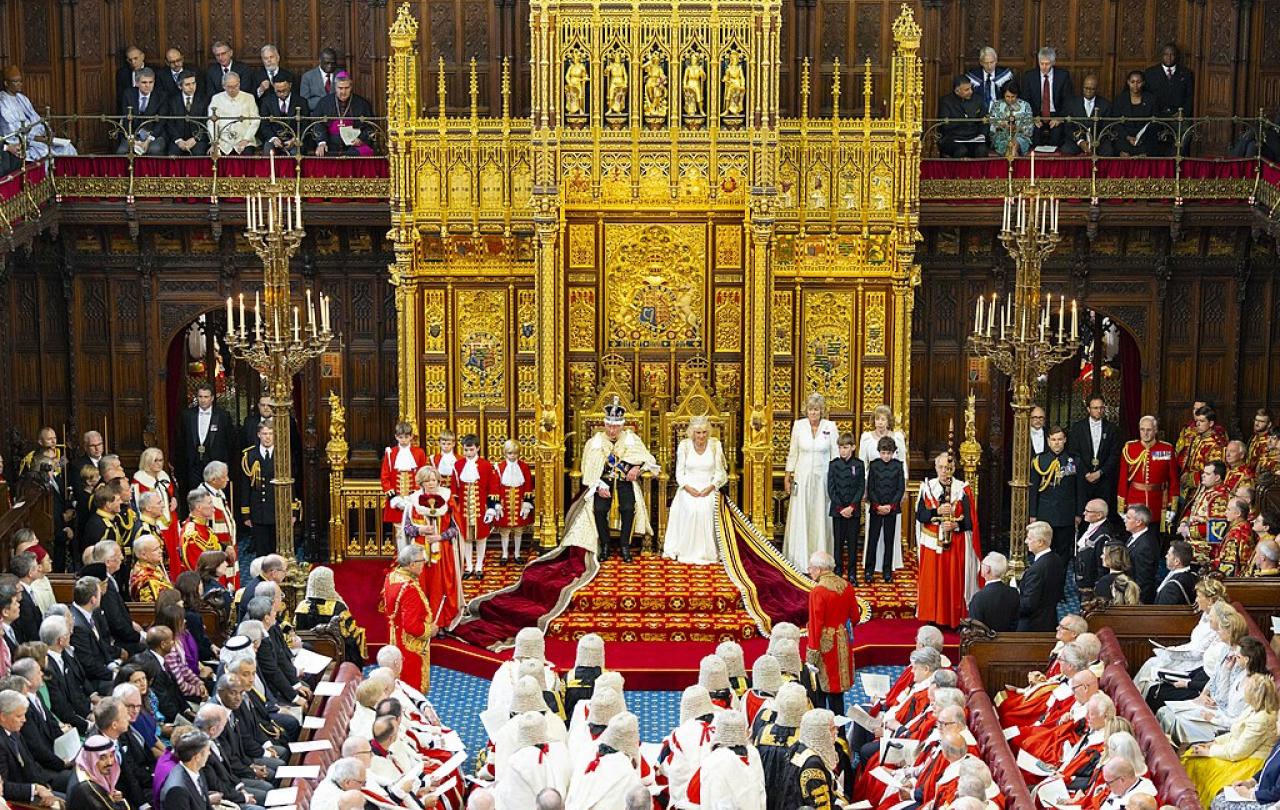New Year is often a time for reckoning and resolutions. Nations, no less than individual persons, would benefit from such an annual reckoning with themselves.
If in life we must always strive to find some Aristotelian ‘golden mean’, between recklessness and timidity so it is in the life of states and nations. Many countries have been brought into ruin by the excess of misdirected appetites and wrongly-ordered desires: demagogues inflaming the people; oligarchs seeking to turn the res publica – the ‘public thing’ – into their own personal fiefdom. Revolutions, corruption and public lassitude are the wages of such sins. Ultimately, it ends in the death of the state itself: the collapse of all legitimate authority into warring gangs, while refugees flee, if they can, to the borders.
Many countries, conversely, go through their lives in cowed timidity, until they end up in an old age of regret, having never achieved their full potential. These nations do not necessarily collapse, but slowly decline – unable to reform themselves, locked in a vision of their past that was better than their present or any imaginable future.
England is at risk of both these dangers. On the one hand, a reckless reactionary populism, which has long laid dormant, but has been unleashed since 2016. It threatens to abandon all prudence and overthrow all restraint, to attack the civil service and the courts, to reject Human Rights, to corrode civic discourse, and to set aside all procedural propriety, until we end up sodden in the gutter of despotism. On the one hand, a persistent constitutional conservatism stands in the way of the necessary, long overdue, reforms which would breathe life and vitality back into an old, tired, country, and would give our institutions the strength to resist such destructive forces.
Nations, like people, can experience decisive moments of what might be termed repentance. When they wake up in the gutter – their capital city bombed, their army disbanded, their people starving – they can turn from the paths which took them to that place, and find a newness of life, a new hope, embodied in a new constitutional order. This is what Germany, Italy and Japan did after 1945. They can also experience a kind of conversion, away from false principles to truer ones, as much of Central Europe did after the fall of the Berlin Wall.
I am using theological language here to describe merely civic and political attitudes, which is always a dangerous thing to do. It would be a misreading of my intent if one were to conclude that I conflate a well-ordered polity with the Heavenly City. Nevertheless, a well-constituted polity, in which freedom and justice, peace and the common good, are not only treasured but actually – to some practical extent – achieved, is an inestimable blessing. We should strive to obtain it.
A well-constituted polity is based upon the principle of ‘public government’. The state is a public entity, belonging to the public, in which public office is a public trust to be used for public ends, and where citizens in public life must be faithful stewards of the public good, for which they are responsible to the public.
Democracy is our shorthand term for this arrangement, although it is a rather clumsy one. Democracy, properly understood, is not unlimited majority rule, nor the unconstrained rule of the person elected by the majority. It is, rather, a complex political system that combines representative and responsible government with civil liberties and the rule of law.
Populism is a caricature of democracy. Populists attempt to undermine the barriers that restrain abuses of power. Their attempts to weaken the judiciary and civil service, sideline those who disagree with them, infringe fundamental rights, centralise power, and restrict public dissent, must therefore be seen as attacks on democracy. They put arbitrary power into the hands of particular persons.
England’s position is not that of Germany in 1945. It might, in some ways, be analogous to that of Central Europe in the 1990s. Much of England today looks like I remember my first visit there then: the same grey faces, the same cheap clothes, the same visible effects of bad housing, bad food, and lack of opportunity. If anything, England is worse off, because at least those countries had hope of better days ahead. No one yet has imagined an English future better than its past.
England has been let down by a failed ideology – that of neoliberal capitalism, which, as Dr Abby Innes points out, is every bit as rigid and doctrinaire as the official Marxist ideology of the former Communist states. England has been let down, too, by decades of corrupt, incompetent, short-sighted and careless government. The symptoms of misgovernment can be seen in England’s economic record, its social problems, its crumbling infrastructure and over-stretched public services. Outside the Customs Union and the Single Market, England is isolated from its European neighbours. The country is not living up to its potential.
This should spur us to consider the weakness of English democracy. As currently established, the state often fails to serve the common good. The English do not live in a well-constituted polity with ‘public government’ as its foundation, but in a fiefdom-state that has been cut, privatised, deregulated into near oblivion.
If it were only a matter of specific individuals, or of one party, the problem could easily be fixed. But the country has not only been let down by this government or that government, by this party or that Prime Minister. It is the system of government, the constitutional order as a whole, that has failed us.
Restoring England’s hope for the future, its prosperity, and its quality of life, must begin, then, with the improvement of English democracy, and that with a refoundation of its constitution. This is hard to hear, because, as Mr Podsnap put it in Charles’ Dickens 1864 novel Our Mutual Friend, ‘We Englishmen are very proud of our constitution, Sir. It was bestowed upon us by Providence. No other country is so favoured as this country.' It is hard to admit that something is broken, when once it was so highly prized – indeed, so intrinsically bound up in England’s sense of national identity.
The Westminster Model of democracy is not without its virtues. Its origins can be traced far back into English history. Yet it did not develop into maturity in England alone. Bagehot was carried around the world, read under palm and pine, and drilled into the ruling classes from Vancouver to Colombo. The Westminster Model owes much to Magna Carta and Simon de Montfort’s ‘Model Parliament’ of 1295, but it owes just as much to the developments of the Victorian age: (nearly) universal suffrage, political parties, manifestos, and the establishment of a permanent, professional and non-partisan civil service.
The transformation of Empire to Commonwealth ended British rule, but not the British way of ruling. Westminster Model democracy had to be set down, of course, into a written, supreme-and-fundamental law, through which all the essentials were faithfully reproduced. If you want to discover the Westminster Model of democracy at its peak, read the constitutions of Belize or the Solomon Islands.






